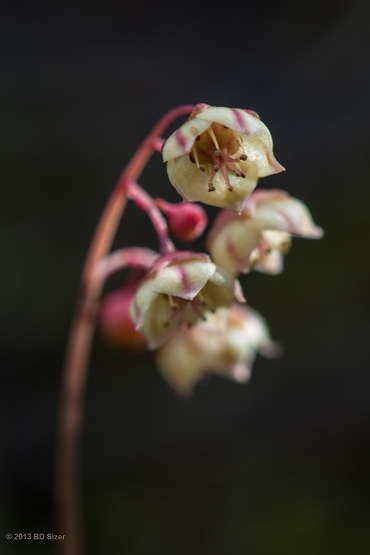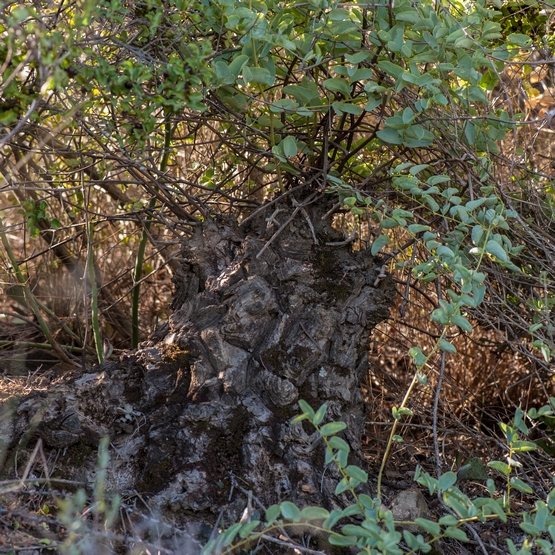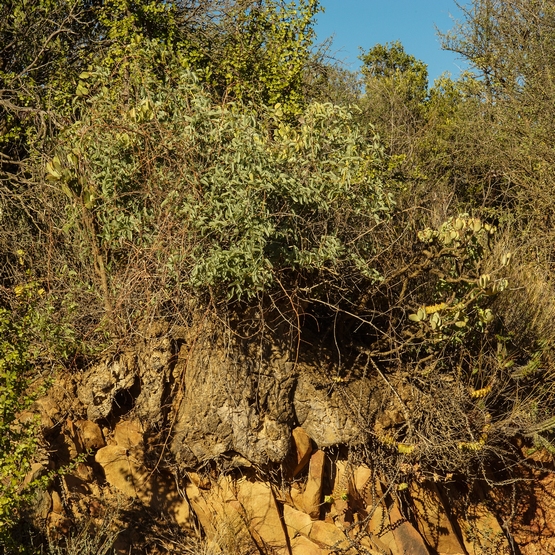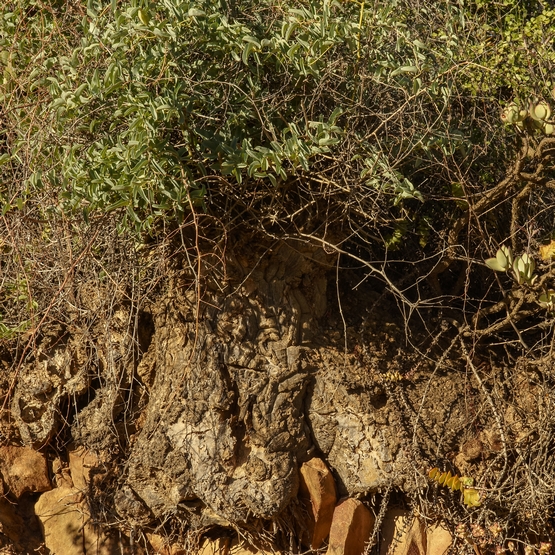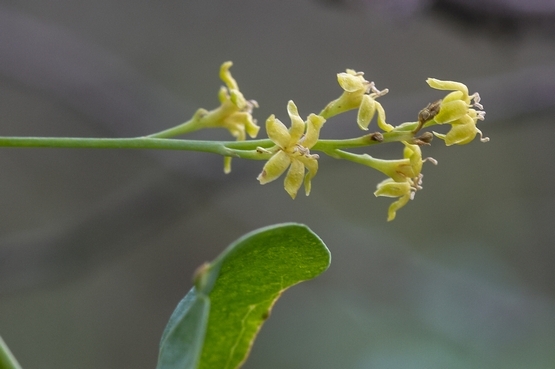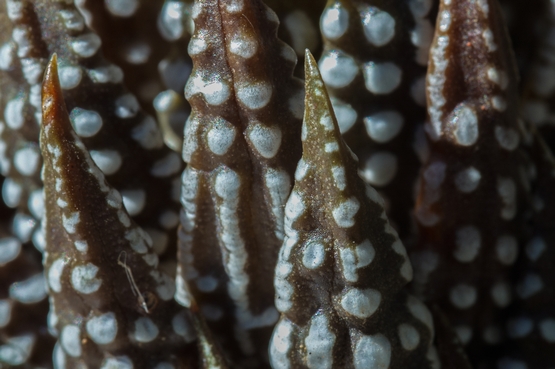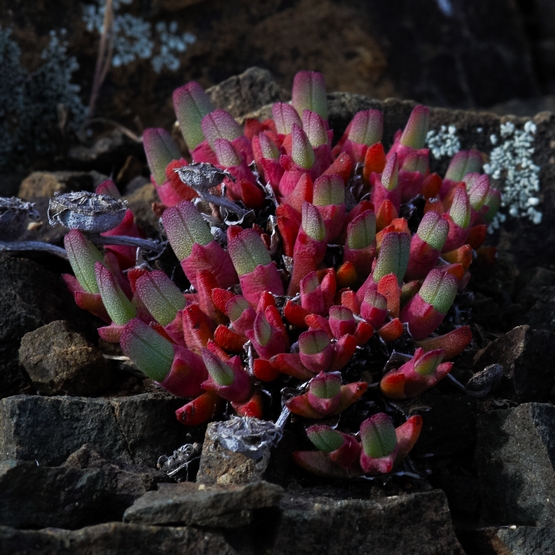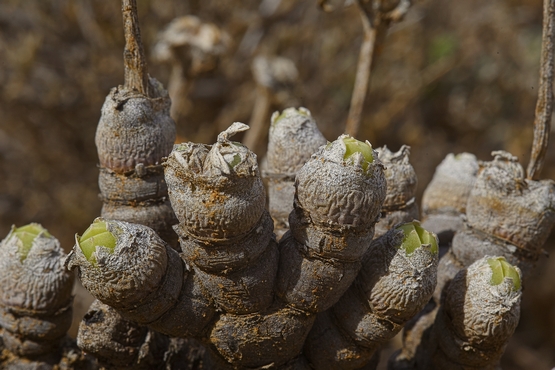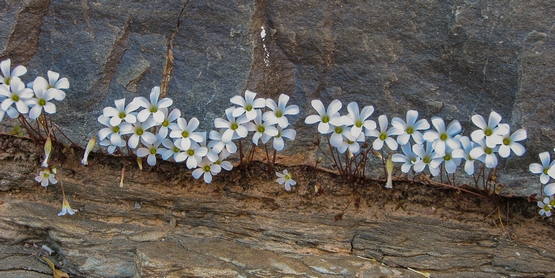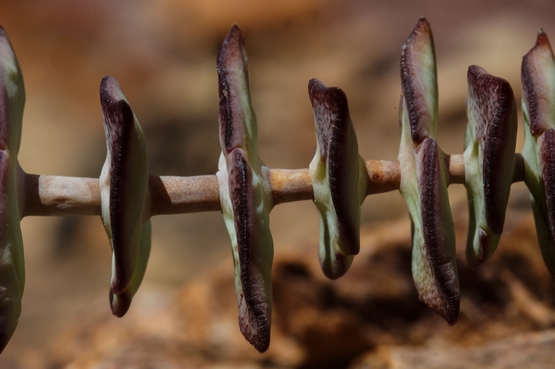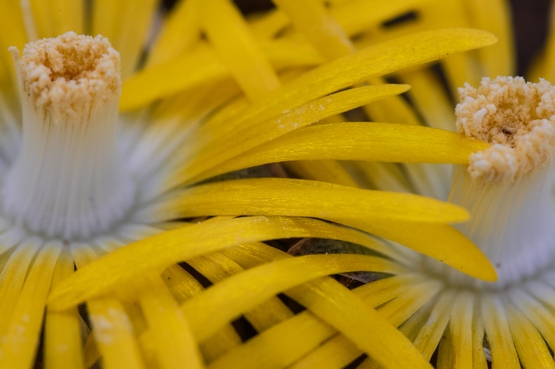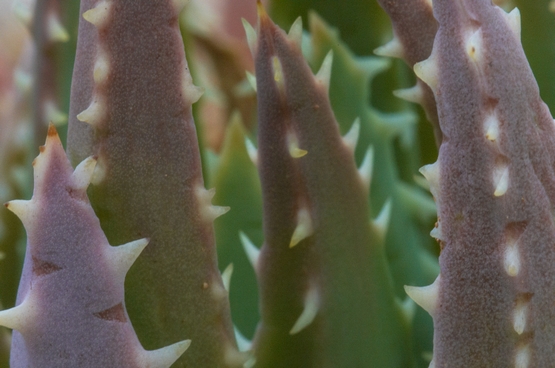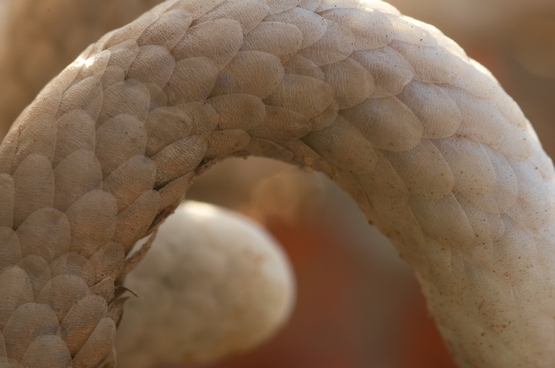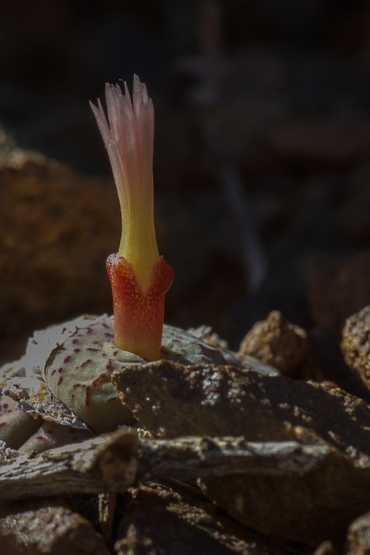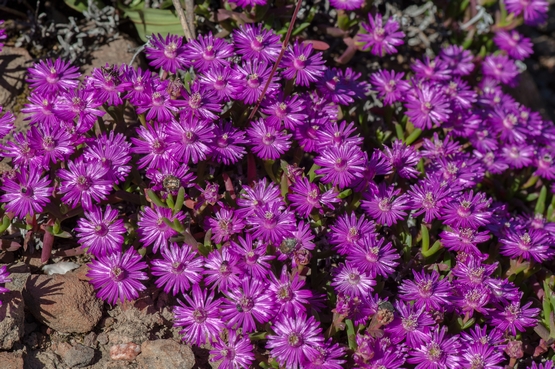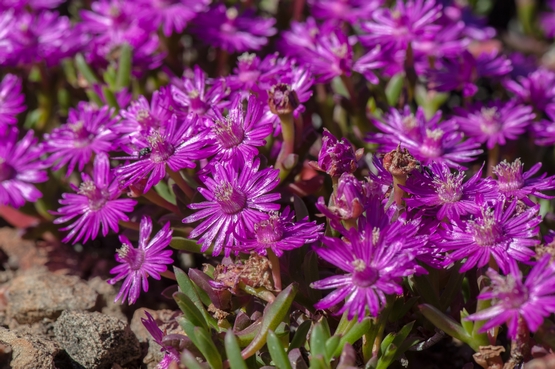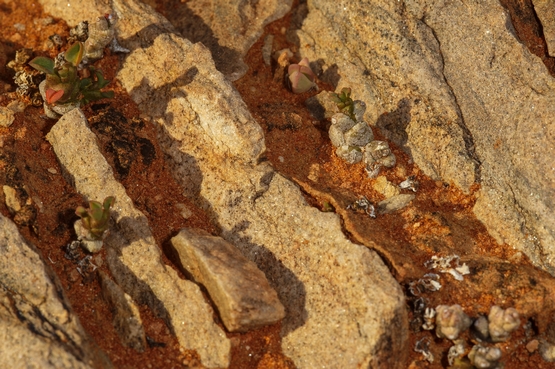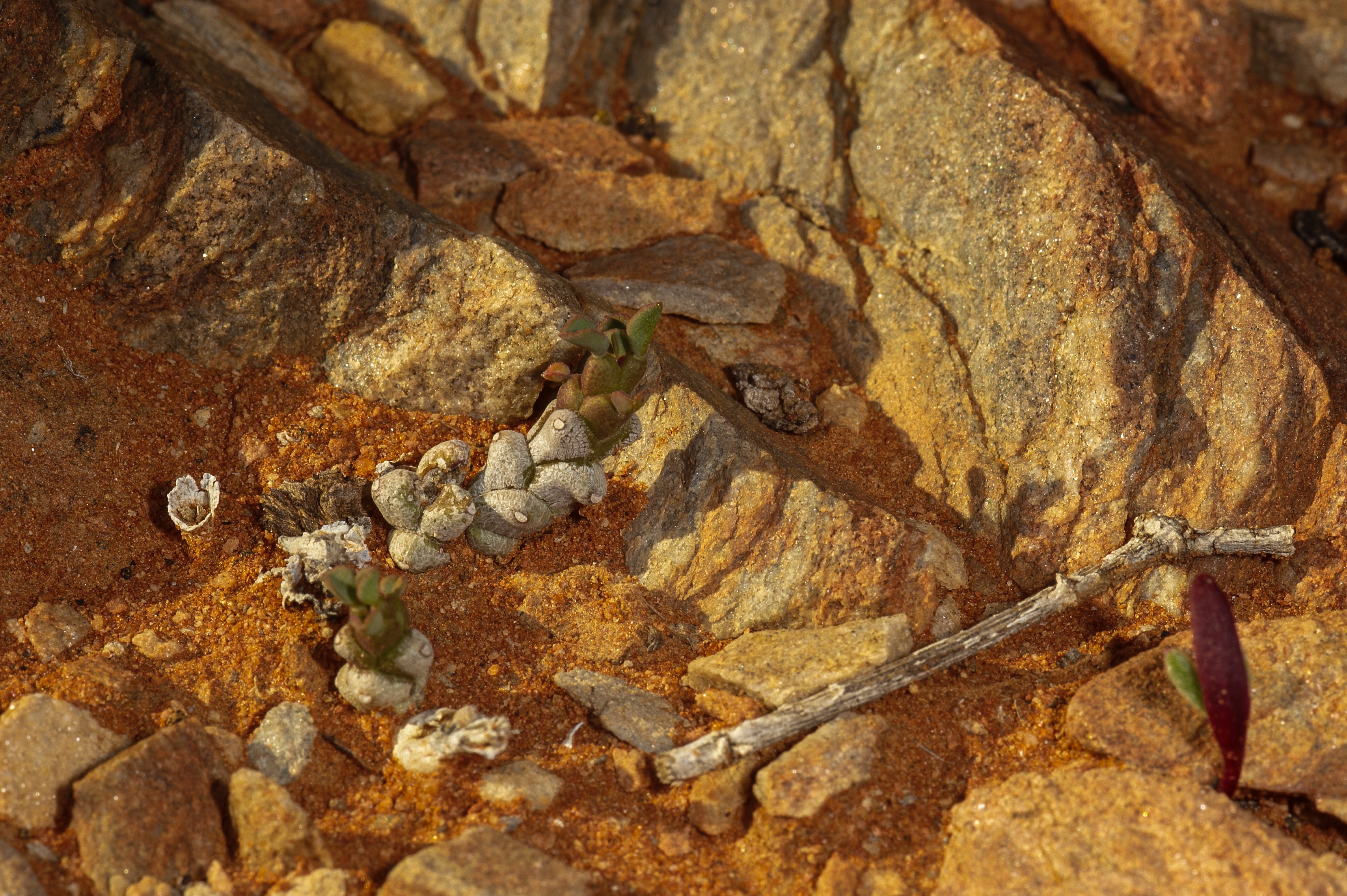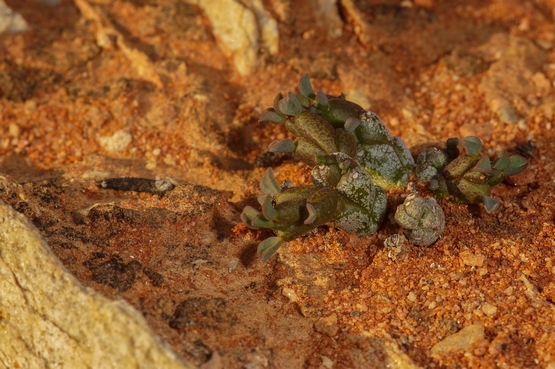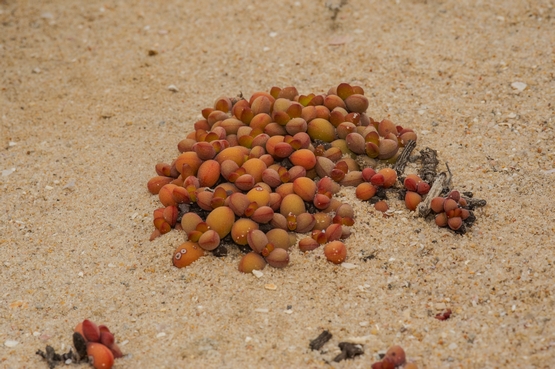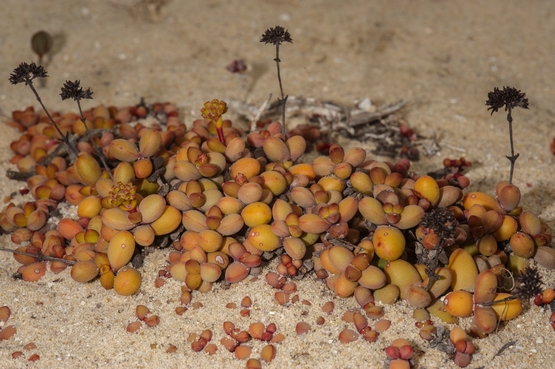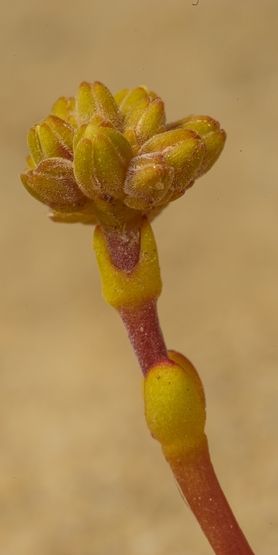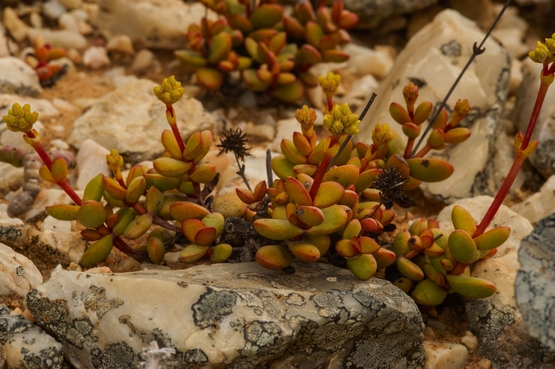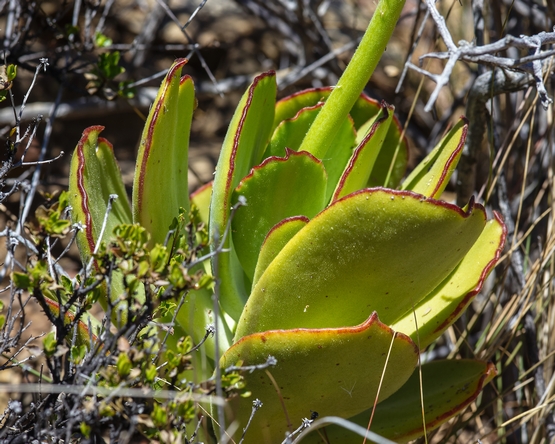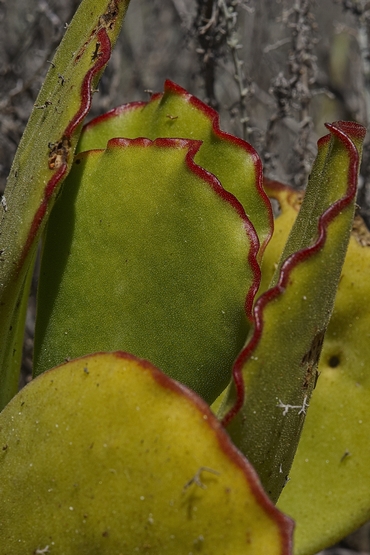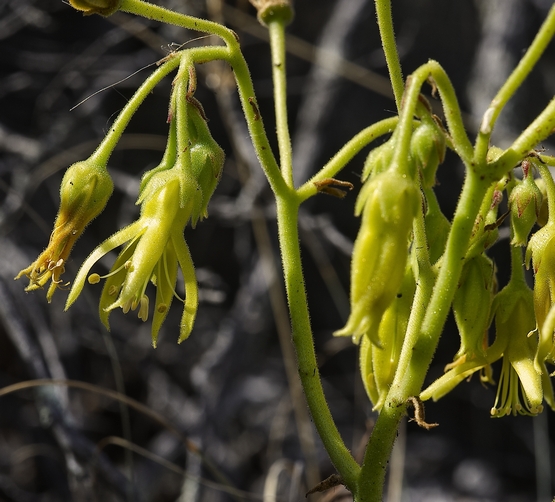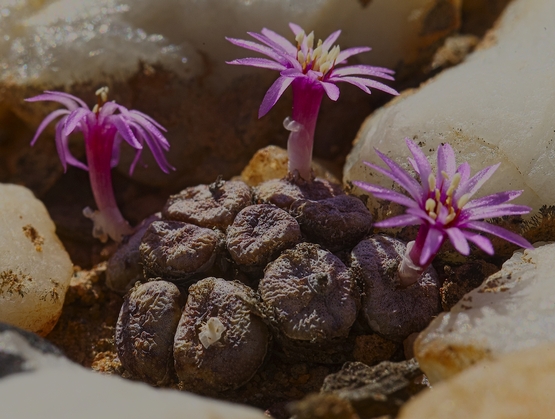This is a member of an interesting little group of tuberous Crassulas. It occurs from the Richtersveld to the Little Karoo, usually on south-facing (shadowy) slopes under shrubs and especially under overhanging rocks.
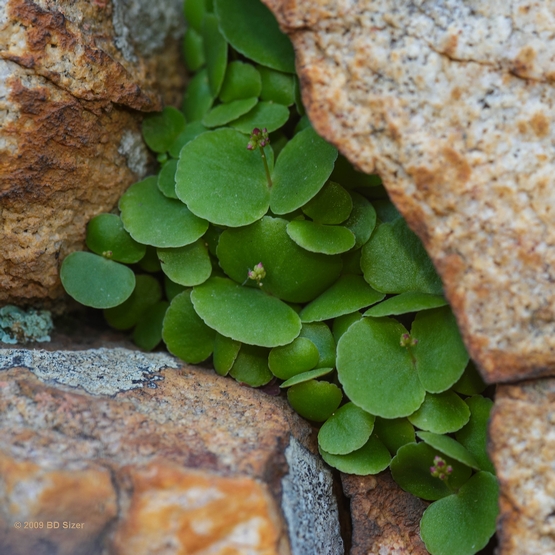
The flowers appear in July to September and are described as star-shaped and white to yellowish green.
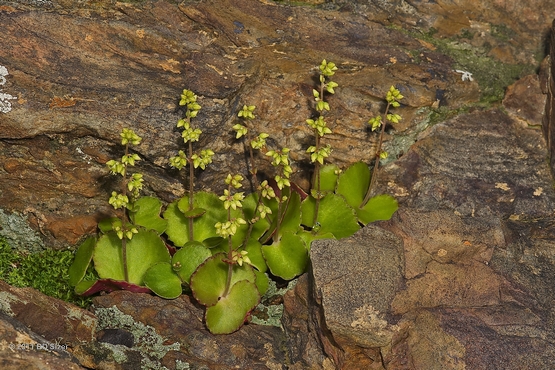
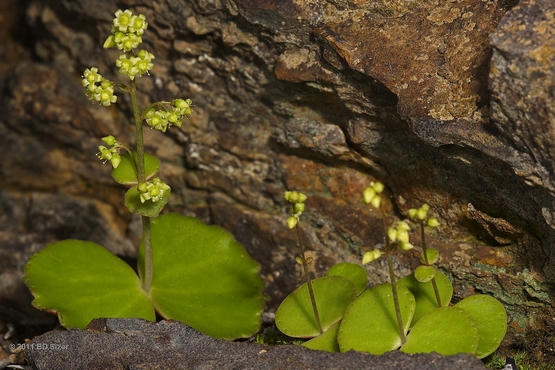
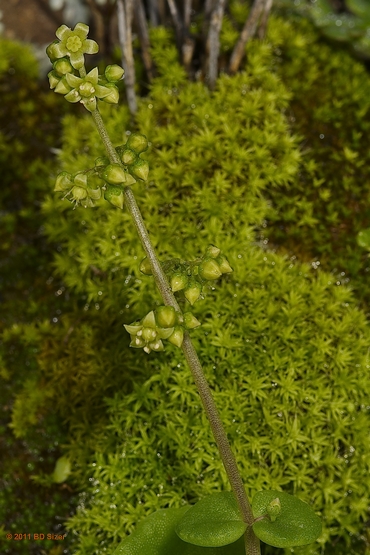
That is exactly as I always saw them in the wild, so that was the image that was imprinted on my brain.
A few weeks ago my wife and I went for a short drive in the area and to the northeast of town I found quite a few plants that looked like C. umbella but with rather different flowers.
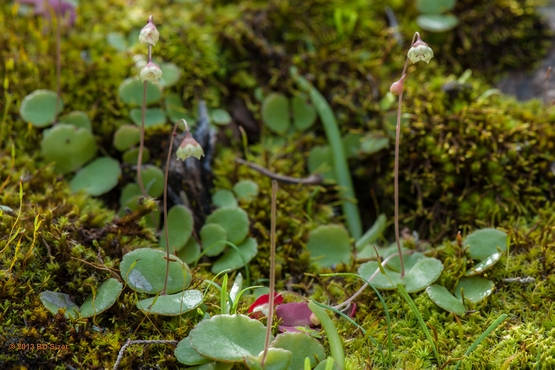
The plants clearly belonged in the same group as C. umbella, so I looked up the relevant descriptions, but none of them fitted.
Obviously I had been to hasty, for when I started to reread the descriptions the problem was soon solved. The Flora of Southern Africa, vol. 14, by H. R. Toelken, says : “C. umbrella is a very variable species with several local forms ………………………………….
3. From Montagu westwards to near Worcester plants tend to have ovate corolla lobes with an acute to acuminate apex and slightly longer squamae. The somewhat larger flowers are cup-shaped and usually more or less turned downwards.”
As the following pictures show, this description fits the plants near Montagu to a T.
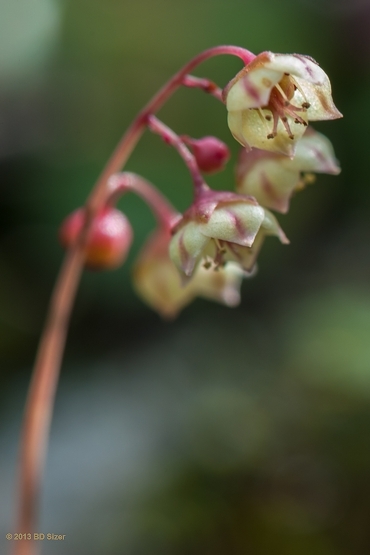
For the last picture I moved the camera slightly to get a darker background, so that the beautiful little flowers stand out better.
